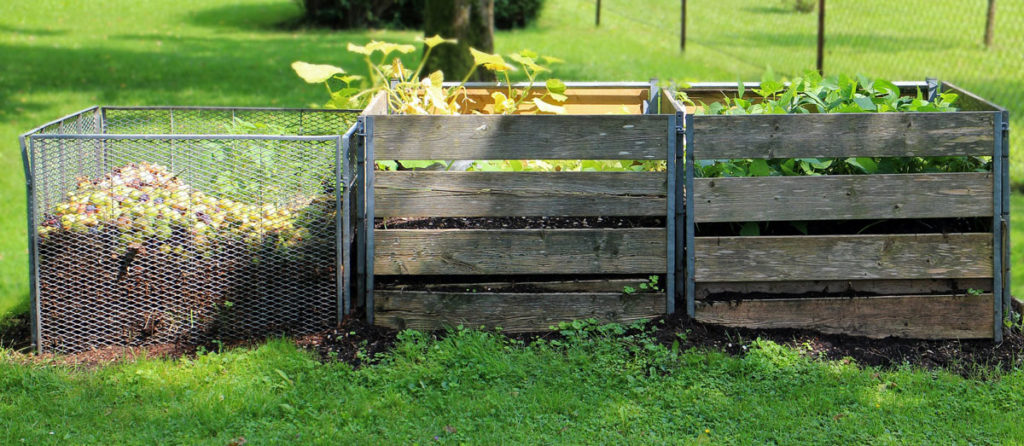info@ajpublog.com
To explain what is compost we can start by stating its benefits and why it is worth the time and effort.
When you make compost you are reducing organic waste, recycling organic matter and producing a nutrient-rich humus that fuels plant growth and restores vitality to depleted soil.
Compost adds nutrients to your plants and helps retain moisture in the soil of your pots, lawn, and garden.
It introduces beneficial organisms to the soil that help prevent plant disease. It also reduces kitchen and yard waste that would otherwise end up in a landfill.
The decomposition of organic matter is a key process in every healthy ecosystem. It turns organic waste into humus returning valuable nutrients into the soil. Compost requires organic matter, microorganisms, moisture, and air.
To start building your compost pile it is necessary to plan ahead.

First, you have to decide where to make your compost pile, it could be indoors or outdoors but you have to be sure you have sufficient amount of space and the area is well vented.
Next, decide what kind of bin you are going to buy or build, what type of organic matter are you going to add to the pile and what kind of compost method should you use.
The method that you decide to use will determine the amount of time you will invest in maintaining the compost and the time you will have to wait to obtain a finished product.
There are two main types of organic waste that can go into a compost pile. Each one contributes different nutrients. If you want to have a healthy compost you will need to balance this 2 types of organic matter.
The general ratio is 3 parts of carbon (brown matter) for every part of nitrogen (green matter).
Green Matter (Nitrogen)
This is the waste that will add the nitrogen needed for a balanced compost.
Scraps of raw fruits and vegetables can be used for the compost pile but avoid cooked kitchen waste.
Coffee grounds and tea bags are a great source of nitrogen.
You can also use lawn clippings and green leaves which are rich in nutrients and are an excellent addition to the compost pile.
Green matter provides raw materials for making enzymes.
It is very important that you avoid weeds with a high content of seeds unless you are using a hot compost method.
Brown matter (Carbon)
To add carbon to your pile you can use: fallen leaves, old flowers, hay, straw, little branches of trees, cardboard, and toilet paper tubes.
You may add eggshells but you have to crush them first to speed up decomposition.
The brown matter will compact and decompose slowly, releasing the nutrients over a long period of time. This gives compost its light, fluffy body that can be worked into the soil to improve its structure and increase the organic matter in it.
Phases of composting
There are four distinct stages of the composting process. In continuous composting, these stages may be occurring concurrently rather than sequentially.
The four phases include:
- The mesophilic phase
- The thermophilic phase
- The cooling phase
- The curing phase
So, how to compost?
Cold compost
Cold compost or regular compost requires minimal effort. it involves adding waste as it becomes available. Adding woody branches and sticks will help the air flow into the pile. Turning the compost is recommended as it moves the material around which helps get oxygen into the mix. The temperature in the compost varies between 5 – 40 º Celsius.
The disadvantage of this method is that takes a longer time to produce useful compost (6 to 18 months), this can vary depending on the size and type of materials in the pile, the smaller pieces are, the faster they will break down.
Cold compost will not kill pathogens, so any disease in your compost my spread to your garden when the compost is added. This is why it is not a good idea to throw diseased plants into your compost.
If you want to speed the decomposition you have to add as much organic matter as you can at one time.
Hot compost
Making a hot compost pile requires more effort and it’s a little bit more complicated, but you can compost your organic matter in weeks. It also has the added bonus of getting rid of seeds and pathogens (diseases).
You have to build a big pile all at once. The pile is made up of thin green and brown matter layers that will heat up as it decomposes. The ideal temperature between 54ºC/130ºF and 60ºC/140ºF.
The size of the bin is very important if it is to small the pile will not heat up properly if it is too large, air will have trouble penetrating into the pile.
Vermicompost
Vermicompost is a method that involves composting using various species of worms. The ending product is called vermicast or worm castings and is a nutrient-rich organic fertilizer and soil conditioner.
Red wigglers are recommended by most vermiculture experts, as they have a big appetite and reproduce quickly.
